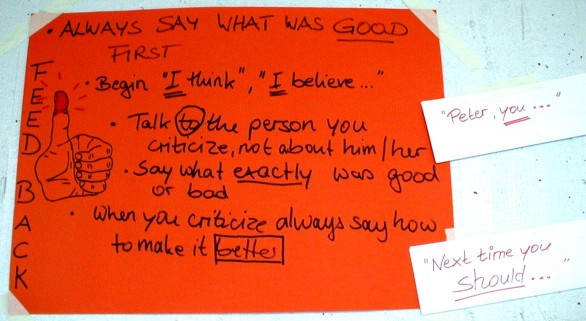|
Feedback is an integral part of the assessment
process. It fulfills the purpose of assessment and should,
at all times, be aimed at enhancing learning and/or behaviour.
Effective feedback:
- encourages the learners to keep on doing
what they do well
- helps the learners to improve the things
that they don't do so well
Feedback is only useful if it is given constructively
in a spirit of co-operation and support. To be useful, feedback
should:
- Be addressed directly to someone
- Be specific, rather than general - it
is best to give concrete examples of what you are referring
to
- Be observational, not judgemental -
describe what the person has done, rather than inferring
why the person did it or what kind of person they are
- Tell the person what you think (use
"I believe..." or "I think...")
- Be practical and actionable - concentrate
on behaviour the receiver can do something about
- Make it manageable - receiving a lorry-load
of feedback in one go can be daunting. Focusing on no more
than 3 things the receiver is doing well and should continue
and no more than 3 things the receiver could do better in
makes it much less frightening a prospect
- Where possible, sandwich positive and
negative feedback so that the receiver hears both. Remember
that the objective is to help the receiver grow, not to
completely demoralise them with all the things they could
do better.
If you receiving feedback:
- Try to listen without interrupting -
don't try to defend yourself. Allow the person to tell you
how they feel
- Keep an open mind
- Try to learn as much as possible
- Take action on the areas where you agree
with the feedback. Think through why your action had the
consequence it did, if there was a misunderstanding how
that came about and how you might want to approach the same
situation differently in the future
- Give feedback in return
This poster, developed by teachers
in a workshop, sums up the feedback routine perfectly.

|
